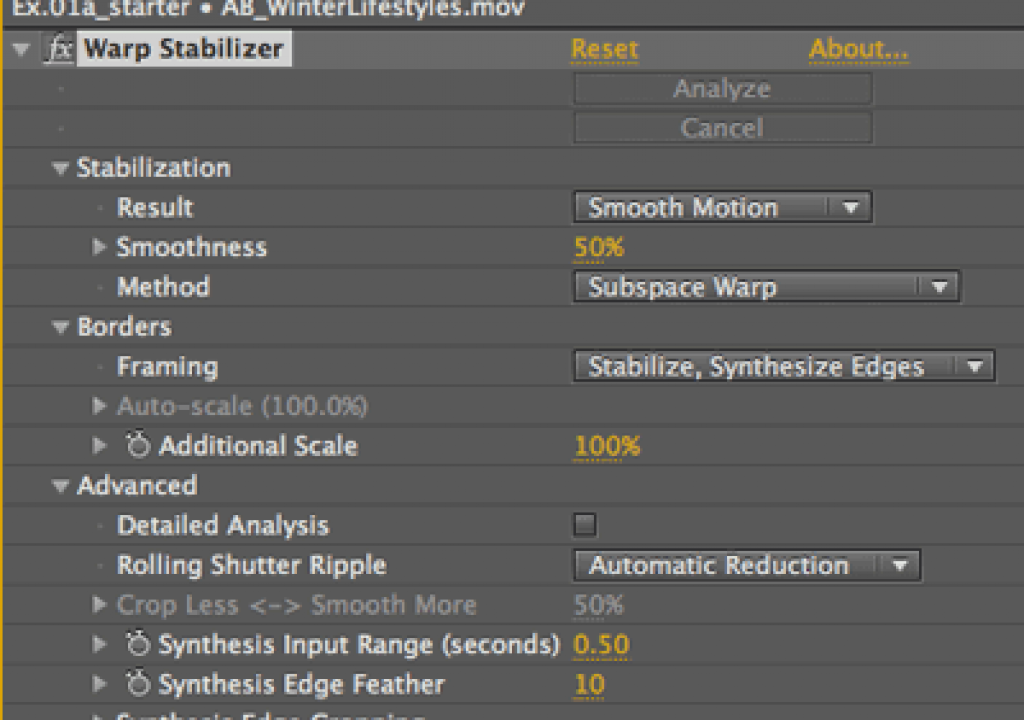

It is a codec that is meant ( originally and even today ) for 'viewing' a video ( highly compressed ). Using H264 ( which your go pro gives you ) is also very demanding on your computer resources. In order to do this it has to perform the task and 'zoom in' slightly at the end of the operation ( discarding the pixels along the edges of your frame and replacing the frame with the new stabilized frame). Why ? Because it is comparing all your pixels and the movement of those pixels, and trying to make them move less ( less shaky footage within frame ). using warp stablizer is very demanding on ALL computer systems. Selecting a region changes the language and/or content on you can tell, using warp stabilizer is very demanding on your computer resources. This way, sequences can provide a new way to explore your footage. Tip: Put all the clips for a scene into a sequence, and use that sequence as a source clip for your main sequence. If the Insert And Overwrite Sequences As Nest Or Individual Clips button in the Timeline is disabled, editing a sequence into another sequence causes the individual clips to be added. Double-click the nested sequence clip in the Timeline.Įdit the contents of a sequence into another sequence.Double-click the sequence in the Project panel.Nested sequences are still regular, editable sequences that you can open by double-clicking: The new nested sequence replaces the selected clips in the current sequence and appears in the Project panel. Enter a name for the new sequence, and click OK.Right-click the selected clips, and choose Nest.Select the clips you want to include in the new nested sequence.To nest a sequence in another sequence, use the same editing techniques you might use to edit a clip into the sequence, including those described below.Ĭreate a nested sequence from clips already in a sequence Make sure that the Insert And Overwrite Sequences As Nest Or Individual Clips button in the Timeline is enabled.

Nested sequences continue to be editable.Ĭhanges made to the nested sequence update dynamically in the other sequence. This lets you apply effects and edit the nested sequence as a single clip rather than modifying the multiple clips inside it. Place one sequence in another sequence to nest it. What you learned: Use a sequence as a source clip


 0 kommentar(er)
0 kommentar(er)
